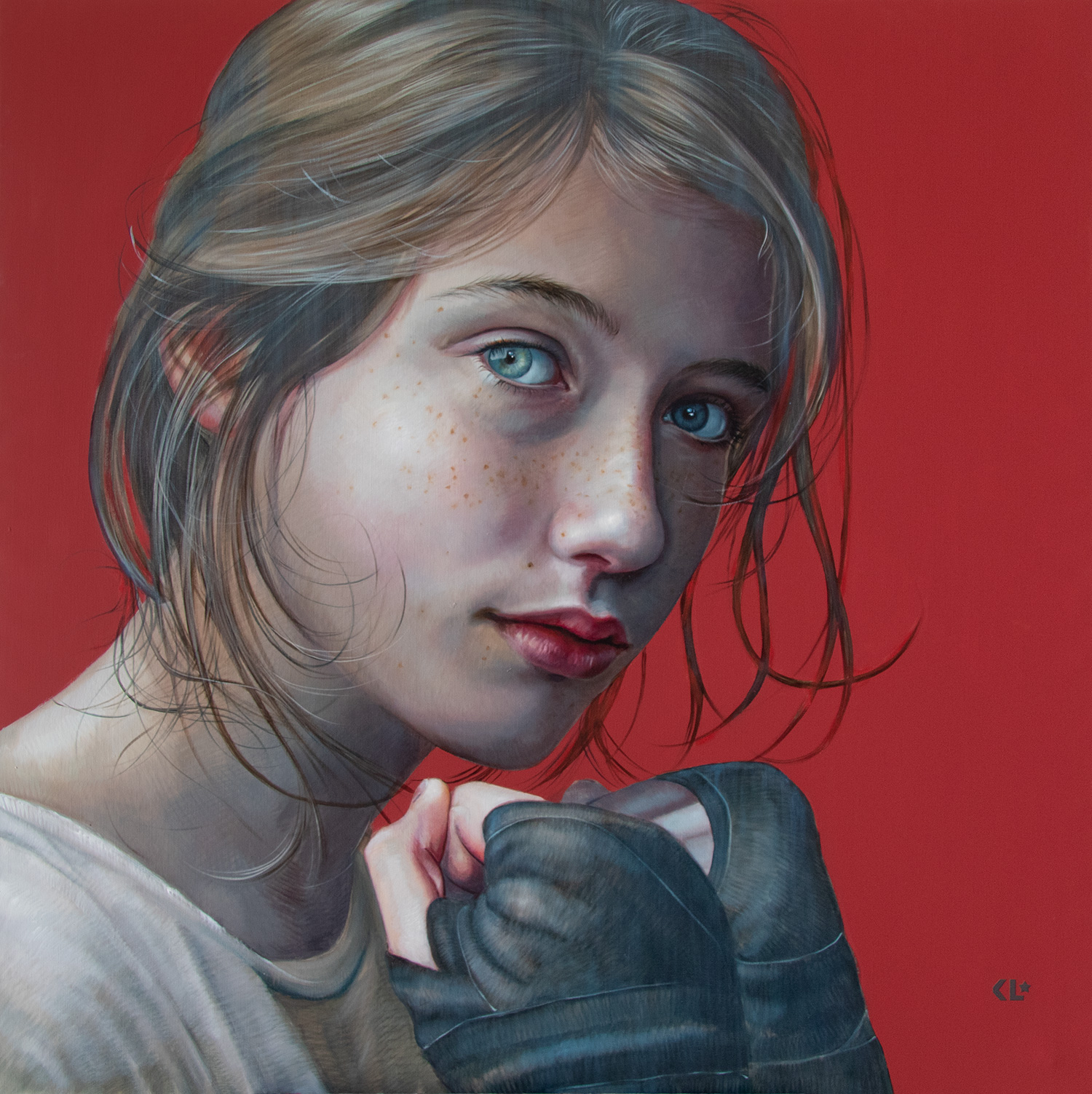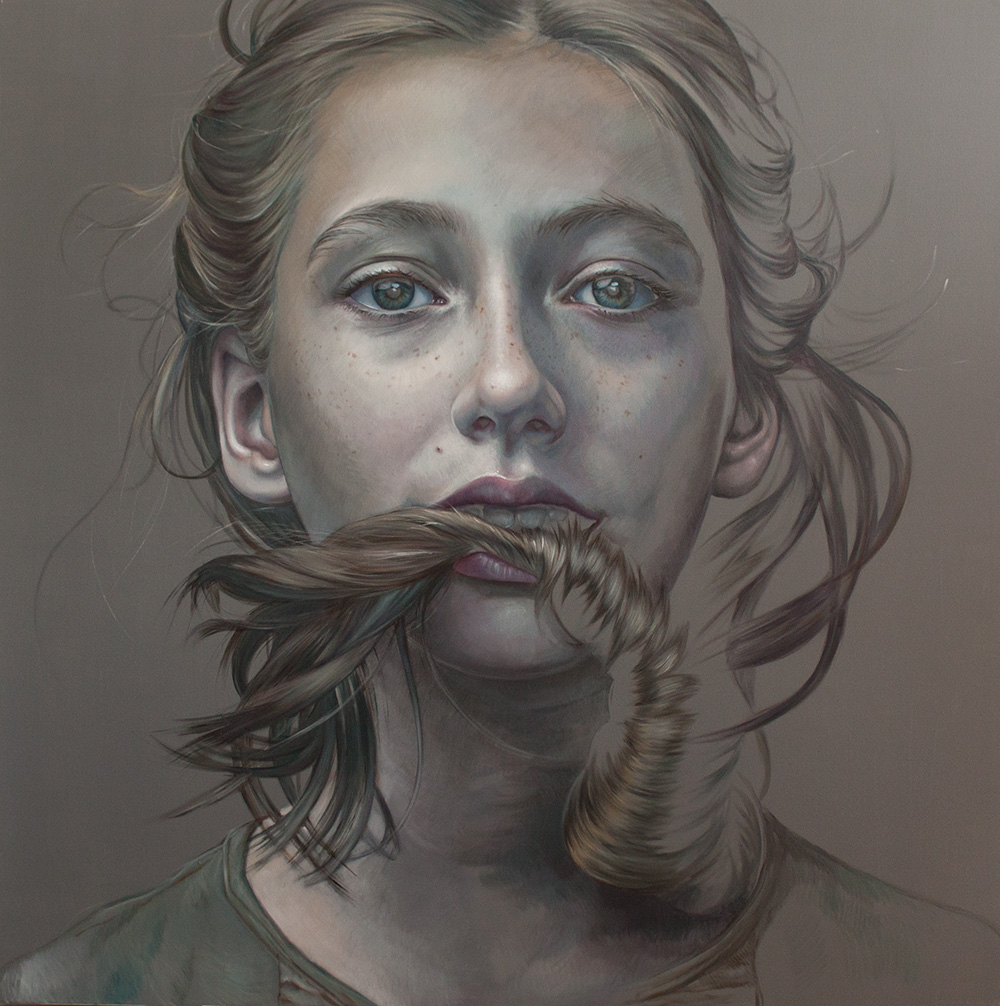Exhibition Essay by Joey Hespe
“Fighting Spirit” December 2021
As with most plans over the last two years, Kathrin had to pivot hers for Fighting Spirit, to accommodate an ever-changing and unpredictable world. Due to months of lockdown, the women she wished to paint and embody in this series, were suddenly inaccessible. It was this inability to control her environment and what would usually inform her creative process, that make these works so special.
For Longhurst, control and the constructs of power are not new territory. Her upbringing in East Berlin, counting tanks and wearing military uniform is a powerfully foreign image from iconic Australian allegory. Fighting Spirit reconsiders Longhurst’s themes on power dichotomies and paradigms while continuing the dialogue on themes of control. Post Me Too, women across the world stood in their power, knowing they had a chance to take back control of their bodies and their traumas. Just when it felt like progress was finally being made, we watched on as Afghani women lost the right to an equal life, young women in Egypt are jailed for the way they dress and act, and abortion is criminalised as women are stripped of the right to own their bodies in states of the United States – something that is all too common in countries around the world. Here, in Australia the collective of women sigh as yet another male with conservative views on women’s rights and equal marriage rises to power, a serial gang rapist walks back into the community and another woman is murdered by her partner. Forced lockdowns and a world enduring the spread of a pandemic only served to highlight the fragility of the human condition. Longhurst asks the viewer; Do we sit like Body and Mind, eyes closed, praying for something to change? Or do we take action, like Make The Days Count – hands strapped, ready to deflect the next punch? No matter the answer, her heroines give hope for what lies around the corner.
Like the pressure that forms coal into diamond, the heaviness of a world in turmoil pushed Longhurst forward into new terrain. Followers of her work will recognise the essence and stoic nature of the feminine portrayed in her heroines, however Fighting Spirit conveys less emphasis on symbols of power. Gone are the militarized uniforms and glorified, made up women – instead, Longhurst plays with the idea of silence and vulnerability as indicators of strength. To the artist, the ability to face hardship and adversity with courage and compassion are what defines a strong woman and these paintings are a greater exploration of this belief. Stylistically inspired by the Film Noir era, a number of these works display somber tones and a darkened palette, reflecting the disenchantment of our times. Not only do Longhurst’s subjects convey a softness and a tender passiveness that draw the viewer into their world; they exude a fragility that only comes with extreme vulnerability.
Fighting Spirit holds a mirror to the viewer asking us to surrender to what we can’t control, but to remain hopeful for what we can. For when we lose control, what we value is truly called in to question. They may connote a softness and docility, but Kathrin’s women are as enduring as they’ve ever been. There is power in silence and Longhurst’s heroines are observing and listening. They whisper, “I’m still here, I won’t give up”.













































